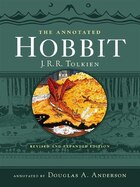
The Bells of Nagasaki
Takashi Nagai
(Kodansha International, Ltd., Tokyo: 1984)
Originally published in 1949 by Hibiya Shuppan under the title nagasaki no kane. Translated and with an introduction by William Johnston.
READ: March 2008
Dr. Nagai was the dean of the School of Medicine at Nagasaki University, and was on the frontlines of the atomic explosion. His school was destroyed, the majority of his students and colleagues killed instantly or within days of the incident. His wife was also killed. He himself was grievously injured, but with the remaining staff and students, they moved to one of the neighbouring villages in the surrounding mountains, and spent a month or more tending wounded people for whom, oftentimes, there was not a lot they could do.
The book is fairly bluntly written. But it is honest, and a simple, sobering read. Dr. Nagai spends no time feeling sorry for himself or for others, and very little time philosophizing about the situation. It is a lot to take in. The no-nonsense tone of the book, and the perfectly tiny amount of time spent lamenting the loss and wondering about the horror of the use of the bomb, might throw some readers off. But it is important to remember the book is a product of its time. The fellow characters who populate Dr. Nagai's book are also medical personnel. They were trained to respond and react quickly to medical situations and emergencies, and they did their work well. While they never thought they'd have a situation so dire (to put it lightly), nor one in which they, too, were casualties, they remembered what their duties were. Dr. Nagai was trained to be cool and detached in these situations, and his book reflects that. He doesn't dwell on philosophizing about the merits of using the A-bomb, or about Japan's actions during the war, and some might perhaps criticize the book on that front, but that is not what this book is about. Those issues are for a different book.
Some knowledge of Japanese history and especially more traditional Japanese culture will help toward better enjoying this book. While certainly not necessary, it will make a lot more sense if you have at least a slight understanding of Japanese culture and ideals throughout the period between the two world wars and even earlier. While nothing can give us a sense of what it was like to be on the ground in Nagasaki on that fateful day, it clarifies the picture a little bit by allowing us into this man's professional life. I say "professional" because I only learned from the book's introduction that Dr. Nagai's wife was killed in the atomic blast. I also know from some of the accompanying pictures that he had two children who survived the bombing and (I think) its aftermath. I wish he had spoken more personally. But again, I guess, that would have made this a different book.

